 The King’s centre, under General Ruthven,
The King’s centre, under General Ruthven, 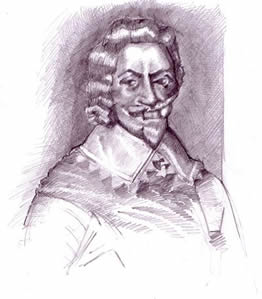 moved forward as far as the village of Radway. The six columns of infantry of which it was composed were under the divisional
moved forward as far as the village of Radway. The six columns of infantry of which it was composed were under the divisional command of Sir Edmund Verney and Sir Jacob Astley; Earl Lindsay and Lord Willoughby led their
command of Sir Edmund Verney and Sir Jacob Astley; Earl Lindsay and Lord Willoughby led their Lincolnshire regiment. Between these and the right wing were eight other regiments of infantry.
Lincolnshire regiment. Between these and the right wing were eight other regiments of infantry. The cavalry of the right wing, under Prince Rupert, commenced slowly the steep descent of the road through Arlescot wood and the Kineton road, the base of which is known as the Bullet Hill,
The cavalry of the right wing, under Prince Rupert, commenced slowly the steep descent of the road through Arlescot wood and the Kineton road, the base of which is known as the Bullet Hill, and drew up there in a meadow at the bottom of the hill. Fiennes states that the better opportunity for the Parliamentarian attack would have been before the artillery and rear came down the hill, which they were a long time in doing. The left wing rested upon the Sun
and drew up there in a meadow at the bottom of the hill. Fiennes states that the better opportunity for the Parliamentarian attack would have been before the artillery and rear came down the hill, which they were a long time in doing. The left wing rested upon the Sun
Rising, Col. Ennis and Col. Lisle’s dragoons covering the flank; near by were the Welsh soldiers and Carnarvon’s regiments of pikemen.
 In advance Wilmot’s two regiments of horse were working across the Vale of the Red Horse, Digby’s reserve covering the crest of the hill.
In advance Wilmot’s two regiments of horse were working across the Vale of the Red Horse, Digby’s reserve covering the crest of the hill.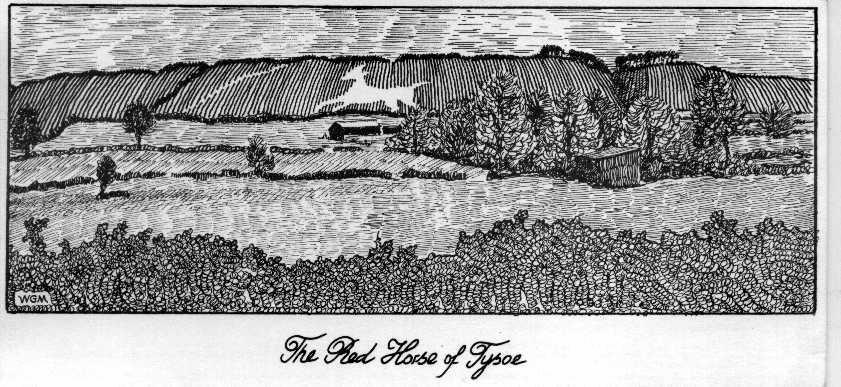
Lord Essex’s artillery were the first to break the peace of the day, a challenge immediately replied to by the Royalist guns near Radway
.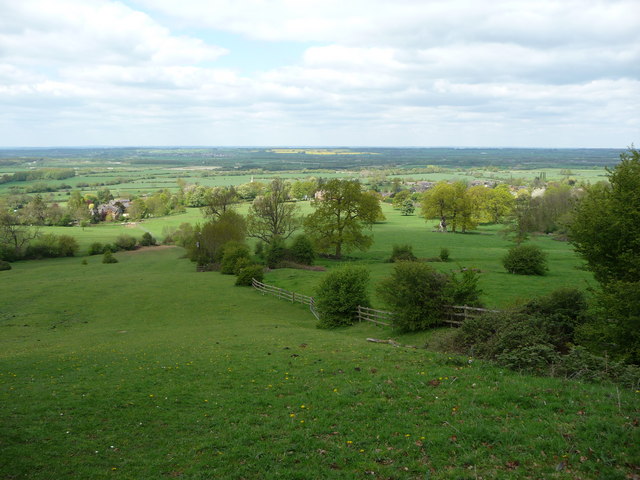 Wilmot, of Adderbury, made the first aggressive movement in a charge upon the Parliamentarian right, and though some success seems to have attended it, yet it can scarcely have been of so much importance as Clarendon the Royalist historian makes out, for he writes: “The left wing, commanded by Wilmot, had a great success, though they had to charge in worse ground, amongst hedges and through gaps and ditches which were lined with musketeers. Sir A. Aston, with great courage and dexterity, beat off these musketeers with his dragoons; and then the right wing of their horse ‘was easily dispersed, and fled the chase fearlessly.’
Wilmot, of Adderbury, made the first aggressive movement in a charge upon the Parliamentarian right, and though some success seems to have attended it, yet it can scarcely have been of so much importance as Clarendon the Royalist historian makes out, for he writes: “The left wing, commanded by Wilmot, had a great success, though they had to charge in worse ground, amongst hedges and through gaps and ditches which were lined with musketeers. Sir A. Aston, with great courage and dexterity, beat off these musketeers with his dragoons; and then the right wing of their horse ‘was easily dispersed, and fled the chase fearlessly.’
 The reserve, seeing none of the enemy’s horse left, thought there was nothing more to be done but to pursue those that fled, and could not be contained by their commanders, but with spurs and loose reins followed the chase which the
The reserve, seeing none of the enemy’s horse left, thought there was nothing more to be done but to pursue those that fled, and could not be contained by their commanders, but with spurs and loose reins followed the chase which the
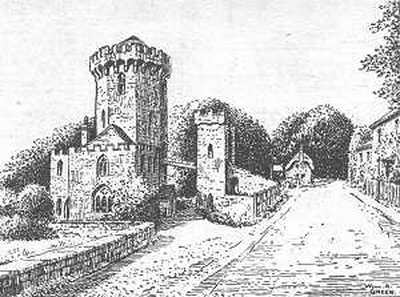
left wing had led them. Thus while victory was unquestionable, the King wt in danger from the reserve of the Parliament, which, pretending to be friends, broke in upon the foot, and did great execution.” Certainly in charge and counter charge at this stage of the attack, the Parliamentarians show to no advantage, and the dispersal of the dragoons, musketeers, and part of Fielding’s horse, seems to have taken place, but the subsequent successful charge of Balfour’s and Stapleton’s brigades makes it clear that they were not involved in any disaster.(above radway tower two views)
Certainly in charge and counter charge at this stage of the attack, the Parliamentarians show to no advantage, and the dispersal of the dragoons, musketeers, and part of Fielding’s horse, seems to have taken place, but the subsequent successful charge of Balfour’s and Stapleton’s brigades makes it clear that they were not involved in any disaster.(above radway tower two views)

.
 Wilmot, of Adderbury, made the first aggressive movement in a charge upon the Parliamentarian right, and though some success seems to have attended it, yet it can scarcely have been of so much importance as Clarendon the Royalist historian makes out, for he writes: “The left wing, commanded by Wilmot, had a great success, though they had to charge in worse ground, amongst hedges and through gaps and ditches which were lined with musketeers. Sir A. Aston, with great courage and dexterity, beat off these musketeers with his dragoons; and then the right wing of their horse ‘was easily dispersed, and fled the chase fearlessly.’
Wilmot, of Adderbury, made the first aggressive movement in a charge upon the Parliamentarian right, and though some success seems to have attended it, yet it can scarcely have been of so much importance as Clarendon the Royalist historian makes out, for he writes: “The left wing, commanded by Wilmot, had a great success, though they had to charge in worse ground, amongst hedges and through gaps and ditches which were lined with musketeers. Sir A. Aston, with great courage and dexterity, beat off these musketeers with his dragoons; and then the right wing of their horse ‘was easily dispersed, and fled the chase fearlessly.’
 The reserve, seeing none of the enemy’s horse left, thought there was nothing more to be done but to pursue those that fled, and could not be contained by their commanders, but with spurs and loose reins followed the chase which the
The reserve, seeing none of the enemy’s horse left, thought there was nothing more to be done but to pursue those that fled, and could not be contained by their commanders, but with spurs and loose reins followed the chase which the
left wing had led them. Thus while victory was unquestionable, the King wt in danger from the reserve of the Parliament, which, pretending to be friends, broke in upon the foot, and did great execution.”
 Certainly in charge and counter charge at this stage of the attack, the Parliamentarians show to no advantage, and the dispersal of the dragoons, musketeers, and part of Fielding’s horse, seems to have taken place, but the subsequent successful charge of Balfour’s and Stapleton’s brigades makes it clear that they were not involved in any disaster.(above radway tower two views)
Certainly in charge and counter charge at this stage of the attack, the Parliamentarians show to no advantage, and the dispersal of the dragoons, musketeers, and part of Fielding’s horse, seems to have taken place, but the subsequent successful charge of Balfour’s and Stapleton’s brigades makes it clear that they were not involved in any disaster.(above radway tower two views)
On the right wing, soon after the time of Wilmot’s charge near the Sun Rising, Rupert’s troops moved down the foot of the hill in the direction of the Kineton road and towards Ramsay’s horse, which advanced to meet them. The Parliamentary general had lined the hedgerows on his flank with musketeers, and had placed ranks of musketeers between horse. But as the cavaliers[3] swept down the slope a defect was visible in the Parliamentarian ranks, and Sir Faithful Fortescue’s Irish troop threw off their orange scarves and deserted bodily, not quite soon enough, it seems, to save themselves, for a score or so of saddles were emptied in the
which advanced to meet them. The Parliamentary general had lined the hedgerows on his flank with musketeers, and had placed ranks of musketeers between horse. But as the cavaliers[3] swept down the slope a defect was visible in the Parliamentarian ranks, and Sir Faithful Fortescue’s Irish troop threw off their orange scarves and deserted bodily, not quite soon enough, it seems, to save themselves, for a score or so of saddles were emptied in the 
onrush of Rupert’s cavaliers. The roundhead ranks were disordered, for the troops had fired their long pieces wildly, and scarcely waiting the meeting, they fled, leaving the musketeers to be cut up. The troops of cavaliers swept through them scattering and destroying all in their way; then deflecting a little to the left they pressed back the mass of fugitives the foot regiments of Essex, Mandeville and Chomley which in turn were overthrown, and the artillery captured. Even Wharton’s regiment and Fairfax’s reserve were hurled back. Ramsay, the cavalry general, was carried for two miles in the melee, and with some of his troopers found a way through the hostile lines to Banbury.
The troops of cavaliers swept through them scattering and destroying all in their way; then deflecting a little to the left they pressed back the mass of fugitives the foot regiments of Essex, Mandeville and Chomley which in turn were overthrown, and the artillery captured. Even Wharton’s regiment and Fairfax’s reserve were hurled back. Ramsay, the cavalry general, was carried for two miles in the melee, and with some of his troopers found a way through the hostile lines to Banbury.
Rupert continued in unsparing pursuit even into the streets of Kineton and as far as Chadshunt. Thus was the left wing of Lord Essex’s army dispersed, though to reform for a later phase of the fight. After so much success the baggage proved to be too attractive to the victors, and had the time wasted in plundering been spent in an attack upon the rear of the Parliamentarian army, then the reign of Charles Stuart might have had a less tragic ending. But with all this, it must be borne in mind that the incident of the rolling up of a wing was repeated in other battles of the war which were more
and as far as Chadshunt. Thus was the left wing of Lord Essex’s army dispersed, though to reform for a later phase of the fight. After so much success the baggage proved to be too attractive to the victors, and had the time wasted in plundering been spent in an attack upon the rear of the Parliamentarian army, then the reign of Charles Stuart might have had a less tragic ending. But with all this, it must be borne in mind that the incident of the rolling up of a wing was repeated in other battles of the war which were more
disastrous to the King’s cause. Sir James Ramsay at a Court Martial at St. Albans[Vn] in November of the same year made a vindication of his conduct
.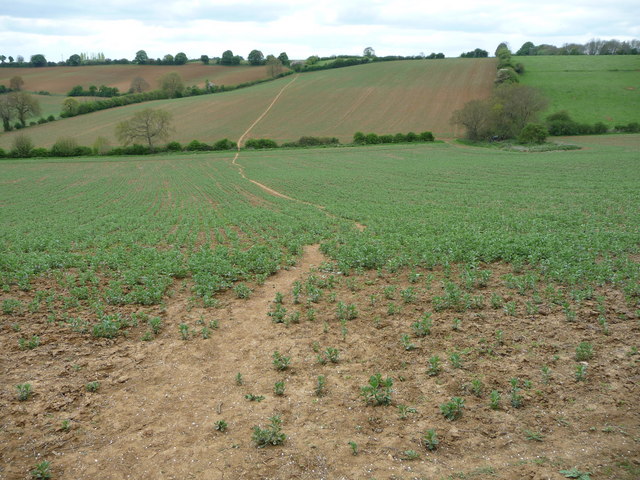
his
upon
 which advanced to meet them. The Parliamentary general had lined the hedgerows on his flank with musketeers, and had placed ranks of musketeers between horse. But as the cavaliers[3] swept down the slope a defect was visible in the Parliamentarian ranks, and Sir Faithful Fortescue’s Irish troop threw off their orange scarves and deserted bodily, not quite soon enough, it seems, to save themselves, for a score or so of saddles were emptied in the
which advanced to meet them. The Parliamentary general had lined the hedgerows on his flank with musketeers, and had placed ranks of musketeers between horse. But as the cavaliers[3] swept down the slope a defect was visible in the Parliamentarian ranks, and Sir Faithful Fortescue’s Irish troop threw off their orange scarves and deserted bodily, not quite soon enough, it seems, to save themselves, for a score or so of saddles were emptied in the 
onrush of Rupert’s cavaliers. The roundhead ranks were disordered, for the troops had fired their long pieces wildly, and scarcely waiting the meeting, they fled, leaving the musketeers to be cut up.
 The troops of cavaliers swept through them scattering and destroying all in their way; then deflecting a little to the left they pressed back the mass of fugitives the foot regiments of Essex, Mandeville and Chomley which in turn were overthrown, and the artillery captured. Even Wharton’s regiment and Fairfax’s reserve were hurled back. Ramsay, the cavalry general, was carried for two miles in the melee, and with some of his troopers found a way through the hostile lines to Banbury.
The troops of cavaliers swept through them scattering and destroying all in their way; then deflecting a little to the left they pressed back the mass of fugitives the foot regiments of Essex, Mandeville and Chomley which in turn were overthrown, and the artillery captured. Even Wharton’s regiment and Fairfax’s reserve were hurled back. Ramsay, the cavalry general, was carried for two miles in the melee, and with some of his troopers found a way through the hostile lines to Banbury.Rupert continued in unsparing pursuit even into the streets of Kineton
 and as far as Chadshunt. Thus was the left wing of Lord Essex’s army dispersed, though to reform for a later phase of the fight. After so much success the baggage proved to be too attractive to the victors, and had the time wasted in plundering been spent in an attack upon the rear of the Parliamentarian army, then the reign of Charles Stuart might have had a less tragic ending. But with all this, it must be borne in mind that the incident of the rolling up of a wing was repeated in other battles of the war which were more
and as far as Chadshunt. Thus was the left wing of Lord Essex’s army dispersed, though to reform for a later phase of the fight. After so much success the baggage proved to be too attractive to the victors, and had the time wasted in plundering been spent in an attack upon the rear of the Parliamentarian army, then the reign of Charles Stuart might have had a less tragic ending. But with all this, it must be borne in mind that the incident of the rolling up of a wing was repeated in other battles of the war which were more
disastrous to the King’s cause. Sir James Ramsay at a Court Martial at St. Albans[Vn] in November of the same year made a vindication of his conduct
.

his
upon

An amusing letter from Captain Kightley tells of this phase of the fight. He admits that in part his own regiment ran away, and it seems to be probable that Captain John Fiennes was in no better way, though in the subsequent rally and attack upon Prince Rupert both did very good service.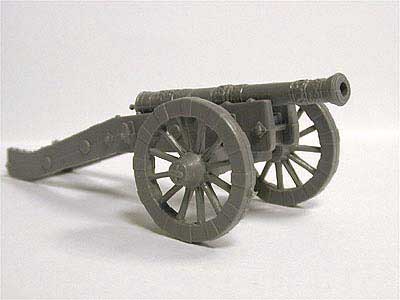

The right wing of the Puritan forces had in the meantime become aggressive. It was the beginning of the great turning movement which was repeated in each of the great battles of the war by the Parliamentarians, in fact, so evident at Naseby and Marston Moor, as to compel belief in studied uniformity of plan. The abandonment or weakening of one wing, then the use of all the weight of the other wing with the foot as a centre pivot, to out-flank, attack, and crush in succession the opposing wing and centre of the Royalist army. Balfore, Meldrum, and Stapleton’s brigades charged Wilmot’s cavalry with such vigour that these were thrust back upon the three regiments of pikemen, under Lord Carnarvon, and chased up the hill side. Cannon balls and other remains of the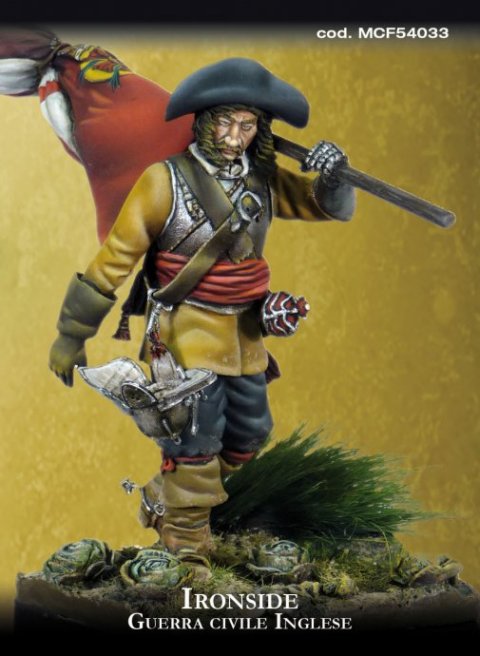
fight found on the hill slopes at Lower Westcote near the Sun Rising are evidence of this attack.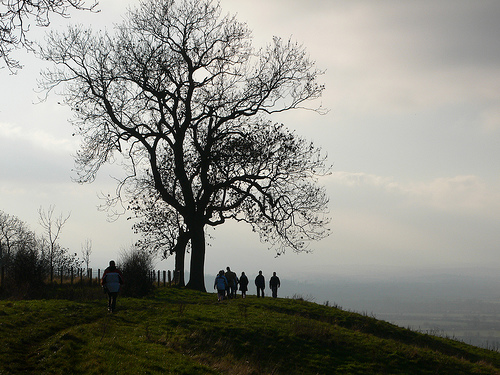 The infantry under Roberts and Constable having moved forward to aid in the attack upon Carnarvon, now wheeled upon the King’s centre, which soon became the focus of a fierce and bloody fight,
The infantry under Roberts and Constable having moved forward to aid in the attack upon Carnarvon, now wheeled upon the King’s centre, which soon became the focus of a fierce and bloody fight, for the elated Roundhead horse, after crushing in the Royalist left wing, hurled themselves also upon the flanks of the nearest troops of the King’s centre, and the blue-coated Broughton horsemen had a busy time of it amongst the royalist gunners
for the elated Roundhead horse, after crushing in the Royalist left wing, hurled themselves also upon the flanks of the nearest troops of the King’s centre, and the blue-coated Broughton horsemen had a busy time of it amongst the royalist gunners as they rode through the battery. Earl Lindsay’s Lincolnshire regiment, which he had led pike in hand, received the brunt of the attack; it was overpowered, and the unfortunate general left for dead with a musket ball in his thigh. The Red Regiment moved up in support, only in turn to be cut up and almost annihilated,
as they rode through the battery. Earl Lindsay’s Lincolnshire regiment, which he had led pike in hand, received the brunt of the attack; it was overpowered, and the unfortunate general left for dead with a musket ball in his thigh. The Red Regiment moved up in support, only in turn to be cut up and almost annihilated, and Lord Willoughby was made prisoner also in the attempt to rescue his father the Earl. Then followed a brilliant personal fight for the royal standard, but the Puritan horseman Copley cut down Sir Edmund Verney, knight marshal of the King’s horse, and standard bearer, and secured the prize. The success of this attack was largely brought about by the ruse alluded to, where, “pretending to be friends,” they broke
and Lord Willoughby was made prisoner also in the attempt to rescue his father the Earl. Then followed a brilliant personal fight for the royal standard, but the Puritan horseman Copley cut down Sir Edmund Verney, knight marshal of the King’s horse, and standard bearer, and secured the prize. The success of this attack was largely brought about by the ruse alluded to, where, “pretending to be friends,” they broke
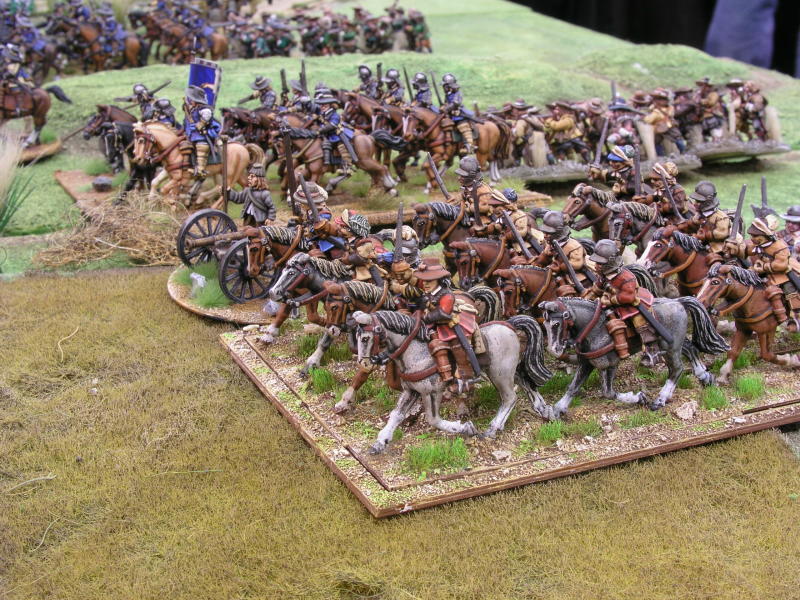
[ in upon the King’s regiments. If it is true that they got so near as to shake hands, the business must have been very simple. Verney had presentiment of his death, and the severed hand clasping the standard shaft is said to be yet sadly searched for by the ghost of Claydon House.
be yet sadly searched for by the ghost of Claydon House.
On the finger of the hand was a ring, a king’s gift. Nugent says about the standard’s recapture: “The Royal standard was taken by Mr. Young, one of Sir William Constable’s ensigns, and delivered by Lord Essex to his own Secretary, Chambers, who rode by his side. Elated by the prize, the Secretary rode about, more proudly than wisely, waving it round his head. Whereupon in the confusion, one of the King’s officers,
his own Secretary, Chambers, who rode by his side. Elated by the prize, the Secretary rode about, more proudly than wisely, waving it round his head. Whereupon in the confusion, one of the King’s officers, Captain Smith, of the Lord John Stewart’s troop, seeing the standard captured, threw round him the orange scarf of a fallen Parliamentarian, and riding in among the lines of his enemies, told the Secretary that ‘it were a shame that so honourable a trophy of war should be borne by a penman.’ To which suggestions the credulous guardian of this honourable trophy consenting, surrendered it to the disguised cavalier, who galloped back with it amain, and before evening received knighthood under its shadow.”
Captain Smith, of the Lord John Stewart’s troop, seeing the standard captured, threw round him the orange scarf of a fallen Parliamentarian, and riding in among the lines of his enemies, told the Secretary that ‘it were a shame that so honourable a trophy of war should be borne by a penman.’ To which suggestions the credulous guardian of this honourable trophy consenting, surrendered it to the disguised cavalier, who galloped back with it amain, and before evening received knighthood under its shadow.”


fight found on the hill slopes at Lower Westcote near the Sun Rising are evidence of this attack.
 The infantry under Roberts and Constable having moved forward to aid in the attack upon Carnarvon, now wheeled upon the King’s centre, which soon became the focus of a fierce and bloody fight,
The infantry under Roberts and Constable having moved forward to aid in the attack upon Carnarvon, now wheeled upon the King’s centre, which soon became the focus of a fierce and bloody fight, and Lord Willoughby was made prisoner also in the attempt to rescue his father the Earl. Then followed a brilliant personal fight for the royal standard, but the Puritan horseman Copley cut down Sir Edmund Verney, knight marshal of the King’s horse, and standard bearer, and secured the prize. The success of this attack was largely brought about by the ruse alluded to, where, “pretending to be friends,” they broke
and Lord Willoughby was made prisoner also in the attempt to rescue his father the Earl. Then followed a brilliant personal fight for the royal standard, but the Puritan horseman Copley cut down Sir Edmund Verney, knight marshal of the King’s horse, and standard bearer, and secured the prize. The success of this attack was largely brought about by the ruse alluded to, where, “pretending to be friends,” they broke
[ in upon the King’s regiments. If it is true that they got so near as to shake hands, the business must have been very simple. Verney had presentiment of his death, and the severed hand clasping the standard shaft is said to
 be yet sadly searched for by the ghost of Claydon House.
be yet sadly searched for by the ghost of Claydon House.
On the finger of the hand was a ring, a king’s gift. Nugent says about the standard’s recapture: “The Royal standard was taken by Mr. Young, one of Sir William Constable’s ensigns, and delivered by Lord Essex to
 his own Secretary, Chambers, who rode by his side. Elated by the prize, the Secretary rode about, more proudly than wisely, waving it round his head. Whereupon in the confusion, one of the King’s officers,
his own Secretary, Chambers, who rode by his side. Elated by the prize, the Secretary rode about, more proudly than wisely, waving it round his head. Whereupon in the confusion, one of the King’s officers, Captain Smith, of the Lord John Stewart’s troop, seeing the standard captured, threw round him the orange scarf of a fallen Parliamentarian, and riding in among the lines of his enemies, told the Secretary that ‘it were a shame that so honourable a trophy of war should be borne by a penman.’ To which suggestions the credulous guardian of this honourable trophy consenting, surrendered it to the disguised cavalier, who galloped back with it amain, and before evening received knighthood under its shadow.”
Captain Smith, of the Lord John Stewart’s troop, seeing the standard captured, threw round him the orange scarf of a fallen Parliamentarian, and riding in among the lines of his enemies, told the Secretary that ‘it were a shame that so honourable a trophy of war should be borne by a penman.’ To which suggestions the credulous guardian of this honourable trophy consenting, surrendered it to the disguised cavalier, who galloped back with it amain, and before evening received knighthood under its shadow.”
above algernon percy
Brooke’s, Hollis’, and Ballard’s infantry, moved across part of the ground abandoned by Ramsay’s horse to attack the right flank of the King’s centre, an attack which soon becomes as disastrous to the Royalists as that on the other flank where Lindsay has fallen. In fact, the regiments of foot from the Parliamentary rear with Constable’s infantry and Stapleton’s horse, made a combined assault upon the King’s centre, which they commenced breaking up.
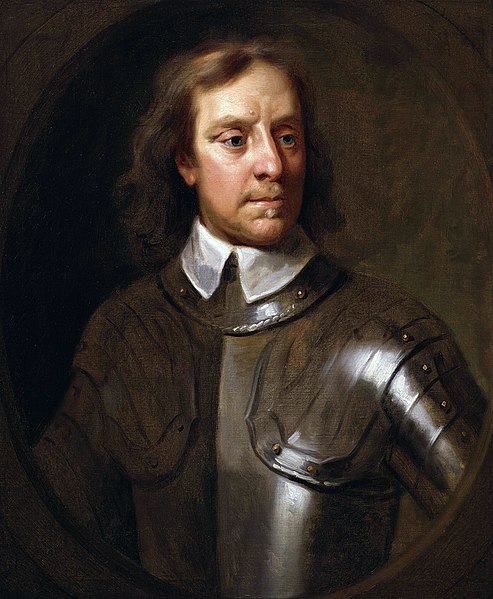 In vain were the royalist reserves hurried forward. The Blue Regiment was cut off by Sir Arthur Haselrigge. Stapleton made a dash, and the King, who had been watching the fickle fortunes of his soldiers from a mound (now the King’s Clump) near Radway, narrowly escaped being made a prisoner. The timely interference of a body of royalist horse—an interference not of sufficient weight to stop the tide of the Puritan attack, but only to stay it for a few moments—above cromwell
In vain were the royalist reserves hurried forward. The Blue Regiment was cut off by Sir Arthur Haselrigge. Stapleton made a dash, and the King, who had been watching the fickle fortunes of his soldiers from a mound (now the King’s Clump) near Radway, narrowly escaped being made a prisoner. The timely interference of a body of royalist horse—an interference not of sufficient weight to stop the tide of the Puritan attack, but only to stay it for a few moments—above cromwell enabled the King to gain the shelter of the hill, whither also the fragments of some of his regiments are compelled to follow.
enabled the King to gain the shelter of the hill, whither also the fragments of some of his regiments are compelled to follow.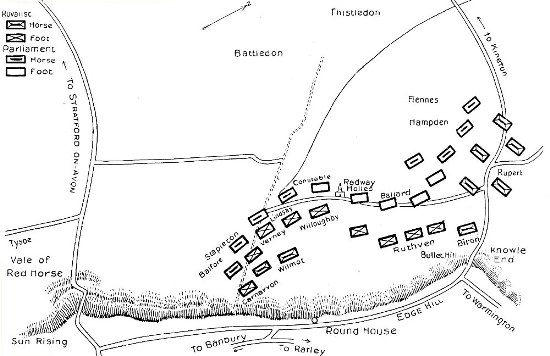
No comments:
Post a Comment